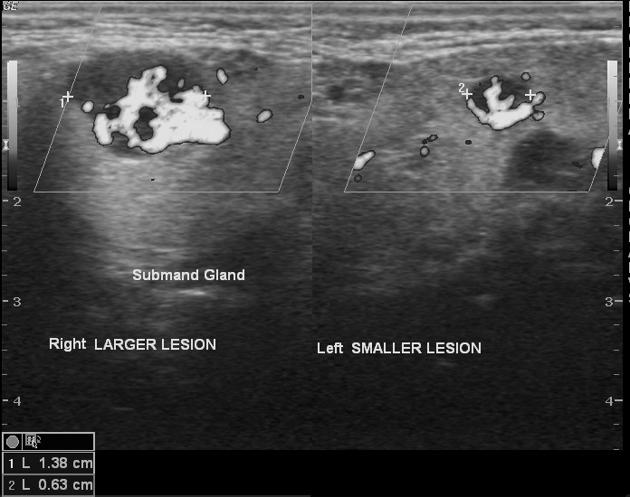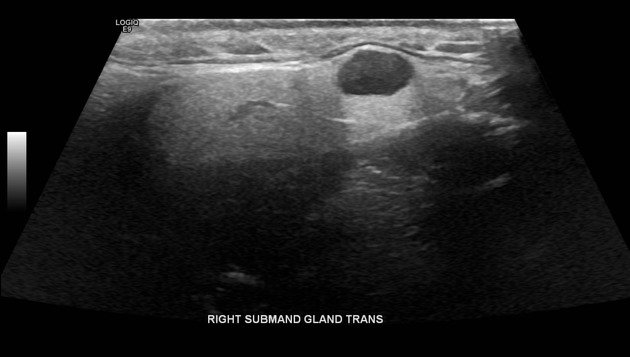Oncocytomas of the salivary glands are rare benign epithelial tumors making up <1% of all salivary gland tumors.
On this page:
Epidemiology
They typically present in older individuals (6th to 8th decades of life). There may be a slight increased female predilection 1-3.
Pathology
Location
While they can affect any of the major or minor salivary glands, they are most commonly in the parotid gland (~80% of cases) 1-3. Parotid gland oncocytomas can uncommonly (<10%) be multifocal or bilateral 3.
Radiographic features
Ultrasound
Sonographic features are non-specific and include 3:
- ovoid mass
- usually homogeneously hypoechoic but can be heterogeneous
- typically well-defined, occasionally lobulated
- vascular
CT
Often seen as a well-defined mass showing homogeneous enhancement 2.
MRI
Appearances can be variable 3:
- T1: hypointense
- T2: iso-to-hypointense
- T1C+: isointense
Treatment and prognosis
There are benign lesions and surgical excision is considered the first-line treatment 4. They have a recurrence rate of around 20-30% (especially with incomplete excision or multinodularity). Malignant differentiation and metastasis are extremely rare 1,2,4.
History and etymology
It was first described by Jaffe in 1932 3.
Differential diagnosis
- on ultrasound, consider pleomorphic adenoma 3
- on CT, consider Warthin tumor 3






 Unable to process the form. Check for errors and try again.
Unable to process the form. Check for errors and try again.